The Ball Python Home:
The correct ball python habitat setup often makes the difference between a healthy, happy pet and one prone to getting sick and dying early. Ball pythons are one of the most popular pets among first-time reptile owners because they are cool looking, easy to take care of, and can live quite a while if cared for properly. Even though this snake is easy to maintain, it still requires a properly designed habitat where it can live in comfort.

A Perfect Ball Python Habitat
Ball pythons do best in a habitat that is large enough to accommodate them which will start around 20 gallons and increase as they grow up and get bigger. Ball pythons need many places to hide and to climb to be truly happy as well as a terrarium that gives them proper humidity, heat, and light. The ball python habitat should mimic their conditions in the wild as much as possible with a day/night light cycle, tropical temperatures around 77 to 85 degrees and around 90 for basking with a moderate amount of humidity.
Sizing a Ball Python Terrarium
Ball pythons require a lot of room, so the cage or enclosure you choose will probably increase in size along with your pet. The general rule of thumb is that the perimeter of the cage should be at least two times the length and two times the width of your snake’s body. Most young snakes will do just fine in a 20-gallon tank, but you can expect to upgrade the tank to a minimum of 40 gallon breeder tank once your snake increases in size.
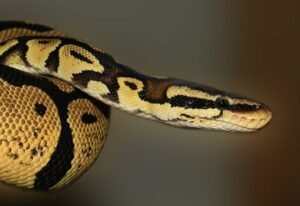
Lock the Ball Python Terrarium
One of the most important things you can have on your tank or enclosure is a close-fitting lid with a lock. Ball Pythons are notorious for getting out of their cages, so having a lockable lid will prevent your snake from escaping. In addition to the lock, the lid should have a full metal mesh top so the snake gets adequate ventilation. The wire mesh breaks really easy.

Ball Python Aquarium Flooring
There are a number of different substrates suitable for a ball python’s terrarium. The cage can be lined with anything from cypress mulch to paper towels. Many pet stores sell terrarium carpet liners that can be easily washed and replaced when they become soiled. For a more cost-effective means, just line the terrarium floor with sheets of newspaper. As long as the flooring is not made up of shavings, the snake will fare just fine.
Landscaping Setup for a Ball Python
The two most important things your ball python habitat needs is a place where the snake can hide and elevated areas on which it can climb. While these features may not seem important, they can and do make a difference in the health and welfare of this snake.
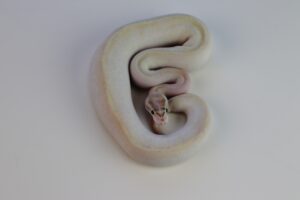
Nocturnal Ball Pythons
This species of snake is mostly nocturnal, so it needs a place to sleep during the daylight hours. This can be anything from a simple cardboard box or an upside-down terra-cotta planter with an opening on its side to commercially made hide boxes available at most pet stores. The only consideration is that the box has to be large enough to fit your snake’s entire body, but not so big that the snake doesn’t feel comfortable entering it.
Branches and Rocks for Ball Pythons
Climbing branches provide your snake with a source of exercise, and they also allow it to curl up and bask closer to the terrarium’s heat source. Branches with artificial greenery are even better since this provides the snake with the added benefit of security. You can also add rocks of various sizes for your snake to crawl over or bask on.
Food and Water
Ball Pythons require a source of water in their habitats both for drinking and for submerging, so it’s important to keep a small pool of water in the terrarium where the snake can get wet whenever needed.

Feeding The Ball Python
Food dishes are not required in a terrarium because it is more beneficial to feed the snake live or dead rodents. Feeding the snake in a separate container helps make the feeding process harder. Because the snake goes into handling mode then is expected to instantly go into feeding mode. Which makes feeding picky eaters harder. Your snake needs regular handling to know the difference between handling mode and feeding mode.
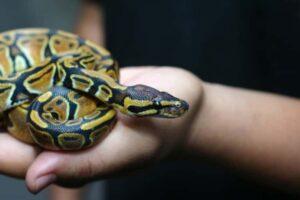
Ball Python Tank Setup Ideas for Light, Heat, and Humidity
Even though most snake owners use heat lamps as the primary source of heat for their pets, they are not the only type of lighting that should be used. Daylight or full-spectrum fluorescent lights are preferred since they promote better vitamin and mineral metabolism in reptiles.

Ball Python Lighting
The ideal habitat will provide the snake with 12 hours of light along with 12 hours of darkness. In the summer, the daylight hours should be increased to 14 hours and then set back to 12 hours during the winter months to mimic the natural progression of the days.
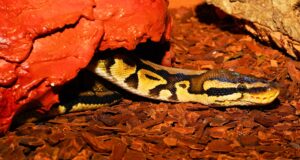
Ball Python Temperature
The optimum temperature for a ball python habitat is between 77 and 85 degrees during the daytime, with one area for basking where the temperature is increased to 90 degrees with an infrared heat lamp. During the night, the temperature should be maintained between 69 and 75 degrees. For the snake’s protection, all lighting should be kept outside of the cage. Although a constant daytime temp will be perfectly fine also.
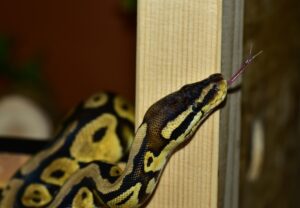
Ball Python Heating
You can also use other forms of heat to maintain the temperature through the night, including under-the-cage heating mats, overhead ceramic heaters or room-sized electric heaters. Never use heat rocks in a snake’s terrarium because they can burn the snake.
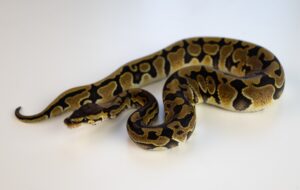
Ball Python Humidity Level
Unlike some reptiles, Ball Pythons don’t require a lot of humidity. Ideally, their habitat should have a humidity level of no more than 50 to 60 percent. If the snake is shedding its skin, increasing the humidity to 65 percent can help speed the process. This can be done by simply misting the habitat with water once a day, or by using watering can to wet the substrate.

Can Ball Pythons Live Together?
It’s not a good idea to have more than one ball python in a habitat. Some of the most significant reasons are:
The snakes can pass diseases to each other such as parasites
They may have problems eating together which leads to one snake not eating at all
One may attempt to, or be successful at, cannibalizing the other
If you still decide to house two snakes together, you should:

Have a large enough habitat that they have room to get away from each other
Quarantine a new snake to remove the risk of disease transmission
Feed each snake separately in a tank outside of the main habitat
Ball Python Tank Setup and Habitat Maintenance:
Raising a healthy snake starts with maintaining an appropriate environment. Daily maintenance should consist of replacing your pet’s water and cleaning or replacing any soiled flooring or substrate. Thoroughly clean and disinfect every other week or as needed with a five percent bleach solution. Use it to clean everything in the habitat and make sure everything is rinsed thoroughly. Always be sure to wash your hands with soap and water after cleaning the tank and handling your snake.
Support Our Breeding operation Click Here!
Get A Baby Tortoise Click Here!
Start Your Own Website and learn how to make money all in one platform Click HERE!
Check Out Our Ball Python Care Guide CLICK HERE!
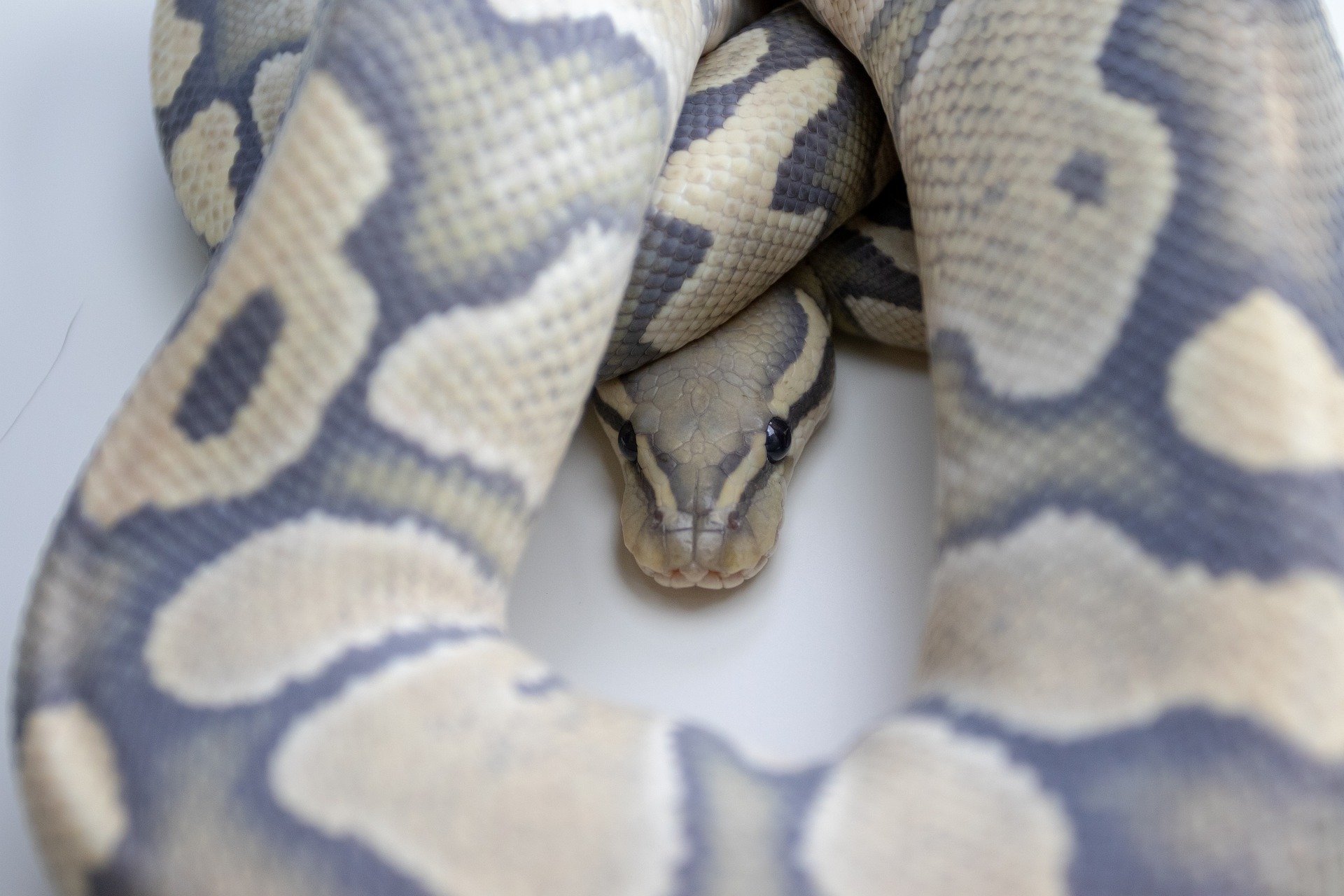

Leave a Reply